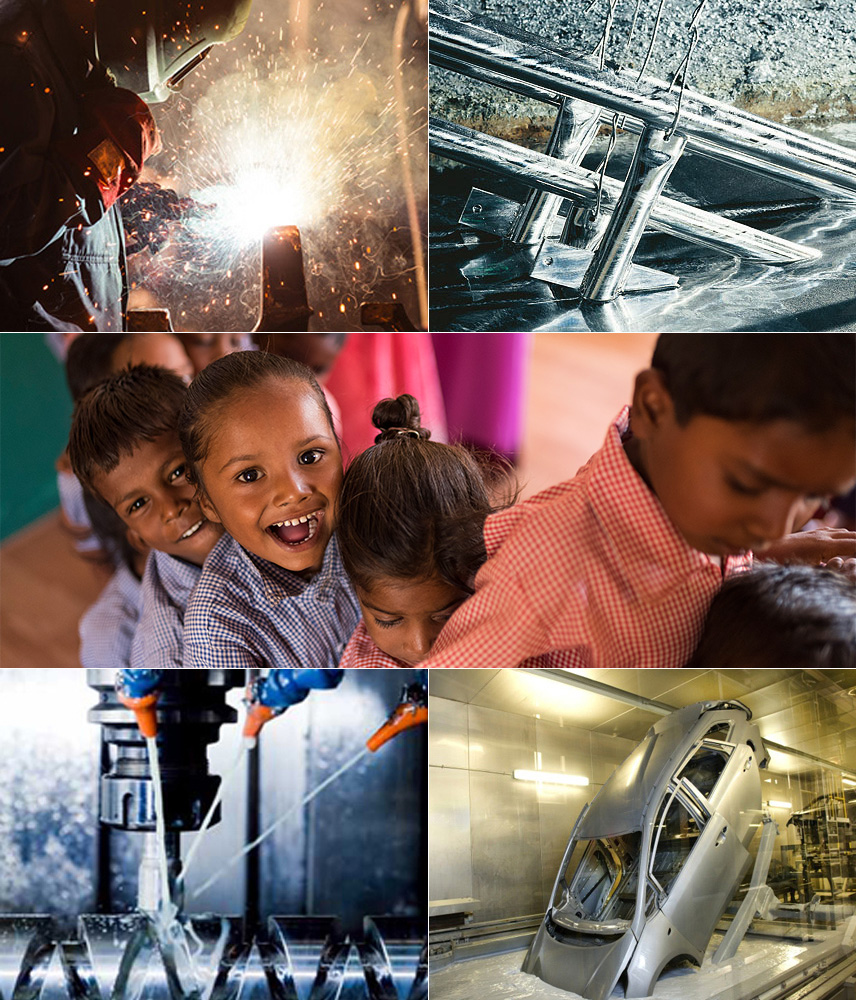- Zinc galvanization has played a key role in preserving the structural integrity of iconic landmarks in India’s Lotus Temple, Statue of Unity, Pradhanmantri Sangrahalaya, Nausena Bhavan, Yashoobhoomi Convention Centre, Qatar’s Lusail Stadium and Dubai’s Burj Khalifa and Bluewater Island
- Zinc galvanisation provides a cost-effective, durable solution to protect heritage and strengthen the future by fighting corrosion
On World Heritage Day 2025, Hindustan Zinc Limited, the world’s largest integrated zinc producer, raises a critical concern about an often-overlooked threat to India’s treasured monuments — corrosion. Corrosion, a natural but relentless process, degrades metals through chemical and electrochemical reactions caused by moisture, oxygen, pollutants and salts. As climate change intensifies and pollution levels rise, corrosion emerges as a major saboteur, accelerating structural decay and eroding centuries of craftsmanship. Zinc stands out as one of the most effective and sustainable solutions to combat this decay. Its protective properties make it a key ally in the fight against corrosion.
While iconic stone structures like the Taj Mahal or Charminar often receive attention, it is the ageing metal frameworks that are most vulnerable to rust and corrosion. The Ashoka Pillar in Delhi, an ancient marvel of metallurgical excellence, continues to withstand the elements, but countless other iron and steel components across heritage sites are far less resilient. From colonial-era iron bridges like Howrah Bridge in Kolkata to ornamental gates and railings in heritage gardens and palaces, these metal elements are quietly deteriorating due to prolonged exposure to erratic weather conditions, moisture, industrial pollution and salt-laden air.
India loses nearly 5% of its GDP to corrosion-related damage each year — a staggering $100 billion in preventable losses. This is significantly higher than countries like Japan and Australia, where widespread use of zinc-coated steel has reduced this figure to less than 1.5%. When it comes to heritage structures, the losses are not just economic but cultural, erasing irreplaceable chapters of our shared past.
Several of the world’s contemporary heritage-inspired landmarks or tomorrow’s heritage such as India’s Lotus Temple, Statue of Unity, Pradhanmantri Sangrahalaya, Nausena Bhavan, Yashoobhoomi Convention Centre, Qatar’s Lusail Stadium and Dubai’s Burj Khalifa and Bluewater Island have adopted zinc galvanization to ensure structural longevity. Zinc-based galvanization is a game-changer, offering a robust and long-lasting solution to combat corrosion and structural degradation. This simple, cost-effective technique acts as a protective shield, adding 30–40 years of life to metal-based support structures used in restoration and conservation.
Aligned with this year’s World Heritage Day theme, “Heritage under Threat from Disasters and Conflicts,” Hindustan Zinc’s message goes beyond metal. It is a call for national awareness to integrate corrosion-resilient materials in both heritage conservation and modern infrastructure. It is significant to build India where pride in our past and preparation for the future go hand in hand.
Zinc, a critical metal, has long been recognized for its unparalleled ability to protect steel against corrosion. Unlike conventional coatings that deteriorate over time, zinc-galvanized structures offer cathodic or sacrificial protection, effectively preventing rust and ensuring long-term durability. Moreover, galvanized steel’s versatility and design flexibility allow for customization and efficient construction, making it a cost-effective and practical choice for a variety of projects.
As the nation continues its journey toward becoming a global economic powerhouse, the onus is on all stakeholders — government bodies, conservationists, engineers and industries — to protect what we’ve inherited. With zinc galvanization, we not only fight corrosion but we also preserve our legacy.
About Hindustan Zinc Limited
Hindustan Zinc Limited (BSE: 500188 and NSE: HINDZINC), a Vedanta Group company, is the world’s largest integrated zinc producer and is amongst the top 5 silver producers globally. The company supplies to more than 40 countries and holds a market share of about 77% of the primary zinc market in India. Hindustan Zinc has been recognized as the world’s most sustainable company in the metals and mining category for the third consecutive year by the S&P Global Corporate Sustainability Assessment 2025, reflecting its operational excellence, innovation, and leading ESG practices. The company also became the first Indian company to join the prestigious International Council on Mining & Metals (ICMM) in 2025. The company also launched EcoZen, Asia's first low carbon 'green' zinc brand. Produced using renewable energy, EcoZen has a carbon footprint of less than 1 tonne of carbon equivalent per tonne of zinc produced, about 75% lower than the global average. Hindustan Zinc is also a certified 3.32 times Water-Positive company and is committed to achieving Net Zero emissions by 2050 or sooner. Transforming the lives of 2.3 million people through its focused social welfare initiatives, Hindustan Zinc is among the Top 10 CSR companies in India. As an energy transition metals company, Hindustan Zinc is pivotal in providing critical metals essential for a sustainable future.
Learn more about Hindustan Zinc on – https://www.hzlindia.com/home/ and follow us on LinkedIn, X (formerly known as Twitter), Facebook, and Instagram for more updates.
For further information, please contact:
Ms. Maitreyee Sankhla
Head - Corporate Communications
maitreyee.sankhla@vedanta.co.in






